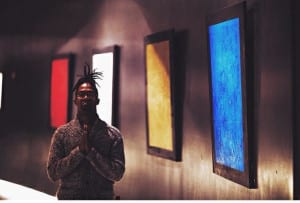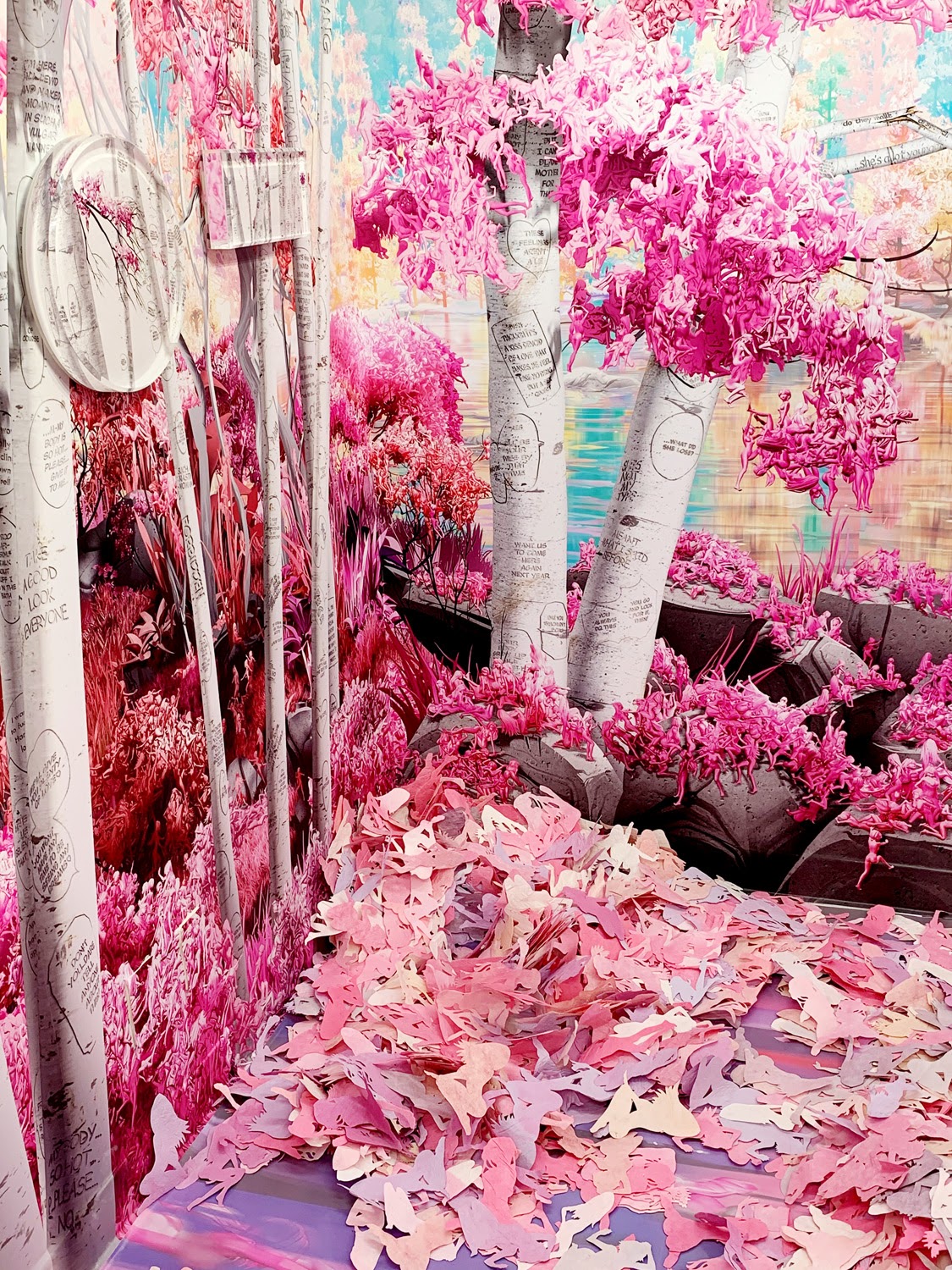I never thought I’d become an art collector, especially since I come from an average, middle-class American family. It’s not a title I ever expected to own, but art has filled my with tremendously meaningful experiences.
Artists help us see the world through new eyes, and they bring people together by communicating universal truths.
I only realized art’s true importance when I was living in the South Bronx. The bleakness of that urban landscape was transformed by the occasional piece of street art or a glimpse into an art-filled church—not just for me, but for everyone. Even now, my favorite pieces in my own collection are the ones that the plumber and my dog walker connect with, too.
What’s so wonderful about art is that you don’t need to know a lot about it for it to move you. But, the more you know about it, the more deeply it can touch you. Art can open up worlds you never dreamed of, and you can bring it into your life on any budget. You just need to know how.
That’s what this column is all about: the BS-free scoop on collecting art and getting people to collect the art you make.
Speaking of BS, beware of anyone who tells you art is a great financial investment. Not that it can’t be, but it’s really rare. (More on that some other time.) What’s important is that, if you love it, art is always a great investment in yourself.
The key is loving it. Collecting art is like getting married. Most people need to date around a lot first before they can choose wisely for a lifetime.
Believe me, if I had it to do over, there are some pieces I wouldn’t have brought home. When I started collecting seriously, Damien Hirst was not just an art “star”; he was THE art star. His work was everywhere. So we bought a series of six large-scale prints of skulls.

Damien Hirst’s I once was what you are, you will be what I am in my dining room.
I’ve always found this work tremendously comforting. The serenity of the skulls and the title remind me that death is a natural part of life—not something to fear. They always fill me to the brim with peace. I don’t regret having them. What I regret is not having all the incredible work I could’ve bought from emerging artists with that budget instead. I just didn’t know any better.
But you can. There are tons of online platforms you can cruise to discover the aesthetic that speaks to you the most—abstract, figurative, Realism, Surrealism, etc. Instagram is currently the art-world fave. The problem with Instagram is that the quality of the art is all over the place. Starting there is like trying to read a book without knowing the alphabet.
Art’s alphabet is an image bank of high-quality work. Depending on what an artist is trying to convey, they use different styles. The style of work can vary tremendously. At first, that makes it hard to recognize which pieces are high quality.
Take Kehinde Wiley, who just painted Barack Obama’s portrait. His brush strokes are meticulous. That technique is fundamental to his practice because his subjects aren’t usually like Obama. They’re normally ordinary or underprivileged. To elevate his subjects, he appropriates the techniques used by classical painters to underscore the high social status of their aristocratic patrons.
Alice Neel is another extraordinary American portraitist. She, too, mainly painted ordinary or underprivileged people, but her technique is completely different. She wanted to capture the inner essence of her subjects. So her brush strokes are loose, and her color palette is often unnatural—like green and purple even in faces.
While their styles are completely different, both are masterful artists. It takes experience to recognize when an artist is breaking rules to convey meaning or when they’re just still developing their craft.
If you have access to museums, they’ll introduce you to high-quality work. Seeing art in person is always best, but it takes time. You can only absorb so much in one visit before you’re drifting by masterpieces in an art coma.
So try an app like Art Authority. It aggregates images of art from museums all over the world and separates them into periods (Contemporary, Impressionism, Renaissance, etc.) When you’re brain dead at work or waiting in line, flip through the Highlights sections until you discover which ones jazz you most. Or, if you already know you like Modern or Contemporary art, check out Curatious, where you can rate art against experts and get instant feedback about the quality of each work.
The critical thing is to develop your eye by looking at lots of art. Once you create a solid image bank, you’ll naturally recognize high-quality art as well as which styles appeal to you. Don’t try too hard to learn the details at first. Just enjoy looking. The details will sink in eventually.
Creating an image bank also helps you discover which artists have distinct voices. Why do most of us recognize the work of certain artists? Yayoi Kusama with her repetitive patterns, or Andy Warhol with his bright, celebrity portraits? It’s not just because they’re famous, they’re famous because their work is recognizably distinct. A great artist doesn’t have to be the only one making a specific kind of work, and they don’t have to be the first one to do something. Their voice communicates their idiosyncratic vision through their unique touch.
We all know, though, that there’s more to true love than just aesthetics, quality, or even voice. There’s an art world saying, “Buy with your eyes, not your ears.” It means you should buy what you love, not what you’ve heard is hot. (SO important!)
But I think it’s even more important to buy with your gut. When you like or recognize a work, ask yourself, “Does this make me feel deeply? Does this make me see the world differently? What’s profound about this?”
There’s no particular feeling you should have. Awe, anger, admiration…any will do, as long as the work hits you in the gut. Your eyes don’t need to fill up with tears like mine do all the time. (Yup, I’m that weirdo.) But, if they do, there’s a good chance you’re experiencing something important, and that’s the point.
Art communicates something profound; everything else is decoration.
Don’t get me wrong, no artist makes only profound work. That wouldn’t give them any room to grow. The best artists have the courage to take risks and experiment until they develop special ways of making meaning that resonate with the rest of us. Plus, what’s profound for me might not be profound for you.
Almost all contemporary art stems from Marcel Duchamp taking the monumental risk of exhibiting an ordinary urinal as art. You read that right—a urinal. That might sound idiotic, (his fellow exhibitors certainly thought so and banned him from showing it until years later.) But his point was to disrupt the idea that art had to be a certain kind of object, like a painting or a beautiful sculpture. With The Fountain, he smashed those limitations so that art can be anything that speaks to you.
Just one more thing. Regardless of what you might think of Duchamp and The Fountain, try not to limit yourself to works by dead artists.
If you think you can only live with Impressionism, it’ll be much harder to bring art into your daily life. Unless you’re .1% wealthy, you’ll have to forget about having a unique work (like a painting), cough up a lot of money for a print, or settle for a reproduction.
The beauty of buying from a living artist is that unique works are generally much more affordable. What’s so great about unique works? It’s not just a rarity thing…although it does make you feel incredibly special to have the only one in the whole wide world, but in our mass-production society, it’s also the luxury of having something in which you can feel the touch of another human’s hand. Art’s about connection.
I promised you no BS, so I’ll come clean. I have a deep desire to help artists make a living by making their art. The more art they can make, the more interesting our world will be. So even if you’ve never considered contemporary art, at least try looking at work by living artists.
There’s contemporary art for every aesthetic: figurative, landscape, portraiture, not just minimalist, abstract, or geometric. There’s exponentially more art being produced now than ever before and loads more ways to buy it. You literally have a world of choice.
For those of you who doubt me, DM me on Instagram with an example of a dead artist you love, and I bet I can suggest a living artist who’ll steal your heart away!

Holly Hager is an art collector and the founder of Curatious. Previously an author and a professor, she now dedicates herself full-time to help artists make a living from their art by making the joys of art more accessible to everyone.



